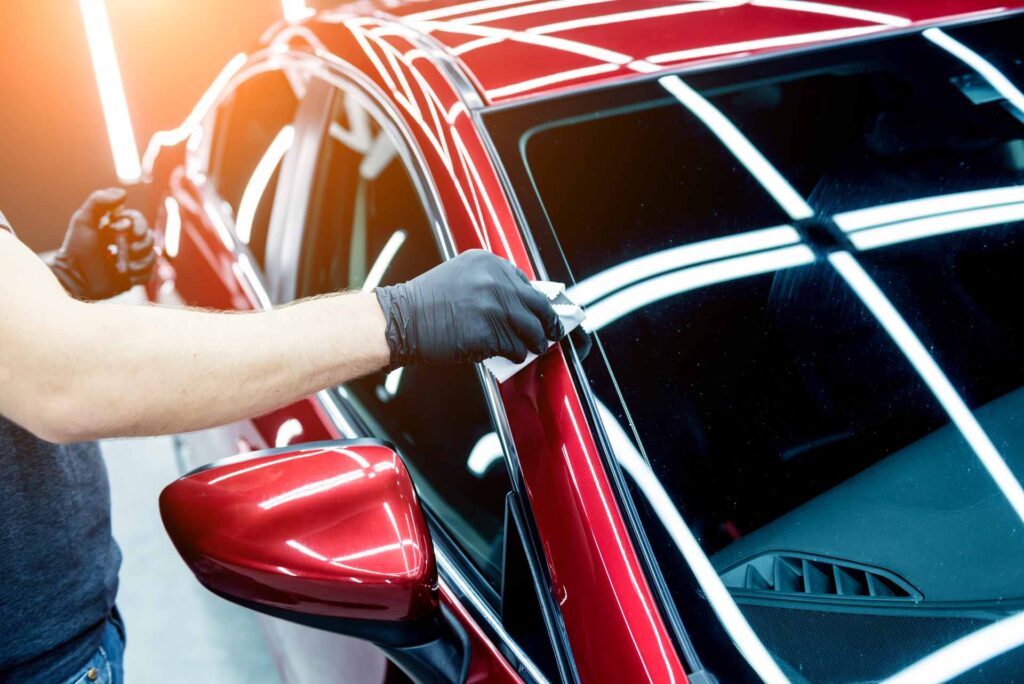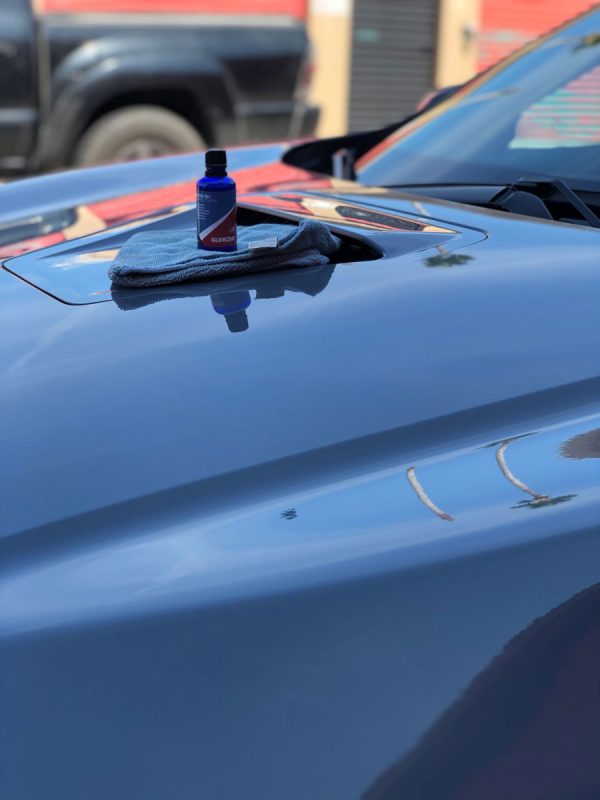Exactly How Ceramic Coating Can Protect Your Car from Environmental Damages
Exactly How Ceramic Coating Can Protect Your Car from Environmental Damages
Blog Article
The Significance of Ceramic Coating: Securing Your Automobile's Exterior With Accuracy
In an age where keeping the useful and visual integrity of your car is extremely important, ceramic covering emerges as an essential service. With its special bonding residential or commercial properties, ceramic finish offers a level of protection that far exceeds standard waxing approaches.
Advantages of Ceramic Coating
When it comes to preserving a cars and truck's visual allure, ceramic layer provides substantial advantages. By forming a semi-permanent bond with the lorry's paint, ceramic finishes properly protect against oxidation and fading, ensuring that the vehicle maintains a shiny, showroom-like surface for an extended duration.
In enhancement to its protective top qualities, ceramic finish provides remarkable hydrophobic properties, creating water and other liquids to bead off easily. This function streamlines the cleansing process, as dirt and debris are much less likely to comply with the surface, lowering the frequency and initiative required for upkeep. Additionally, the layer's resistance to chemical spots from acidic contaminants like bird droppings and tree sap is one more noteworthy benefit, decreasing prospective paint damages.
Ceramic coverings additionally enhance scratch resistance, giving a layer that can absorb small abrasions and swirl marks. This feature is especially valuable in maintaining an excellent surface area, reducing the probability of noticeable imperfections and preserving the stability of the car's paintwork in time.

Exactly How Ceramic Finish Functions
Understanding the mechanics behind ceramic finishing discloses its efficiency as a safety solution for vehicles. Ceramic finishings are essentially liquid polymer applications that chemically bond with an auto's manufacturing facility paint, developing a protective layer. This layer functions as an obstacle against ecological impurities such as ultraviolet, dirt, and grime rays, which can degrade a vehicle's exterior in time. The essential element in ceramic finishing is silicon dioxide (SiO2), which originates from quartz crystals and is understood for its extraordinary firmness and sturdiness.
Application of ceramic covering entails a precise procedure. This shield improves the car's gloss and hydrophobic residential properties, helping with less complicated cleaning by triggering water and impurities to bead and slide off easily.
In addition, the finishing's molecular framework provides resistance to minor scrapes and chemical stains. Unlike waxes or sealants that rest on top of the paint, ceramic layers integrate with the surface area, using resilient defense. This assimilation is fundamental to its performance, making sure the lorry's surface continues to be pristine for many years.
Contrasting Ceramic Coating to Alternatives
In the world of vehicle defense, ceramic coating stands as a formidable option when compared to conventional alternatives such as sealants and waxes. While waxes provide a short-term shiny finish, usually lasting only a few weeks to months, ceramic coverings give a longer-lasting service, commonly withstanding for many years. This toughness is credited to the chemical bonding that happens when ceramic finishings are applied, forming a solid layer that is immune to ecological risks.
Contrastingly, sealants, although more resistant than waxes, still drop short of the robust defense used by ceramic finishes. Sealants can typically read this last for up to a year, giving an artificial shield against particular aspects. They do not have the exceptional hydrophobic residential or commercial properties and UV defense that ceramic finishes deliver.
In addition, ceramic finishes offer boosted scratch resistance, which neither waxes nor sealants can successfully match. In summary, while standard waxes and sealers use standard protection, ceramic finishes offer a comprehensive, long-lasting option that dramatically protects the lorry and improves's exterior finish.
Application Process Described
Using ceramic coating to a original site vehicle requires a precise process to guarantee ideal results and toughness. The first action entails extensively cleansing the auto's surface area to get rid of dust, grease, and previous waxes. This is important for making sure the finish sticks appropriately. A pH-neutral shampoo and a clay bar treatment are frequently used to achieve a pristine surface area. When cleaned up, the car is dried and brightened to remove any type of flaws, as any existing scrapes or swirls can end up being more pronounced after the layer is used.
Adhering to surface prep work, the application of the ceramic finishing begins. The layer is typically applied in a climate-controlled setting to prevent dust fragments from picking the freshly cleaned surface area. Using an applicator pad, the ceramic layer is applied in small sections to guarantee also insurance coverage. It is vital to comply with the producer's standards pertaining to the appropriate healing time and application thickness.
After application, the finish calls for a details healing duration, during which the car needs to be protected from water and impurities. This healing process can vary depending on the item yet typically varies from 24 to 2 days. Eventually, this in-depth procedure is crucial in achieving a resistant and shiny surface.
Upkeep Tips for Longevity
To preserve the durability of a ceramic covering, adherence to a self-displined upkeep regimen is crucial. Stay clear of automated cars and truck cleans, as their severe brushes can jeopardize the covering's integrity.
Post-wash, drying out the lorry with a tidy microfiber towel avoids water spots that might break down the finish in time. Additionally, use a ceramic finish booster every few months. These boosters reinforce the hydrophobic homes and improve the finishing's protective capacities, guaranteeing it remains reliable versus impurities.
Maintain in mind that auto parking locations play a crucial duty in maintenance. ceramic coating. Whenever feasible, park in shaded areas to minimize UV direct exposure, which this article can gradually damage the finishing. For long-term storage space, consider utilizing a vehicle cover for included protection versus environmental aspects
Conclusion
In conclusion, ceramic finishing offers as a critical safety layer for vehicle exteriors, providing lasting defense versus ecological aspects such as dust, uv, and crud rays. Recognizing the application procedure and sticking to upkeep referrals are essential for taking full advantage of the durability and efficiency of ceramic finish.
When it comes to maintaining an auto's visual allure, ceramic layer supplies considerable advantages. By forming a semi-permanent bond with the vehicle's paint, ceramic coverings effectively prevent oxidation and fading, making certain that the cars and truck maintains a shiny, showroom-like coating for a prolonged period. Ceramic coatings are basically fluid polymer applications that chemically bond with an automobile's factory paint, developing a safety layer. In summary, while traditional waxes and sealers use basic defense, ceramic finishes provide a comprehensive, lasting service that considerably boosts and protects the vehicle's exterior finish.

Report this page